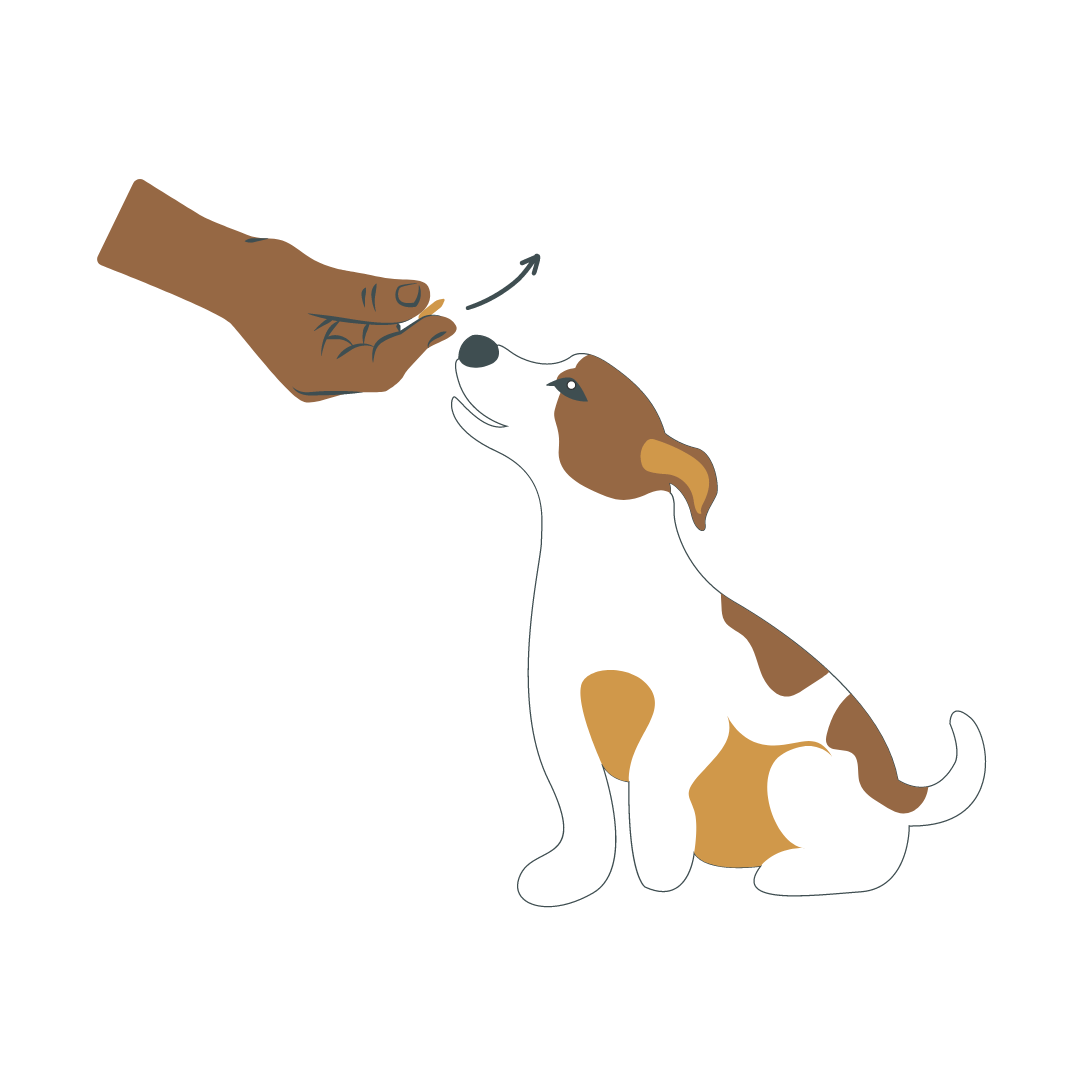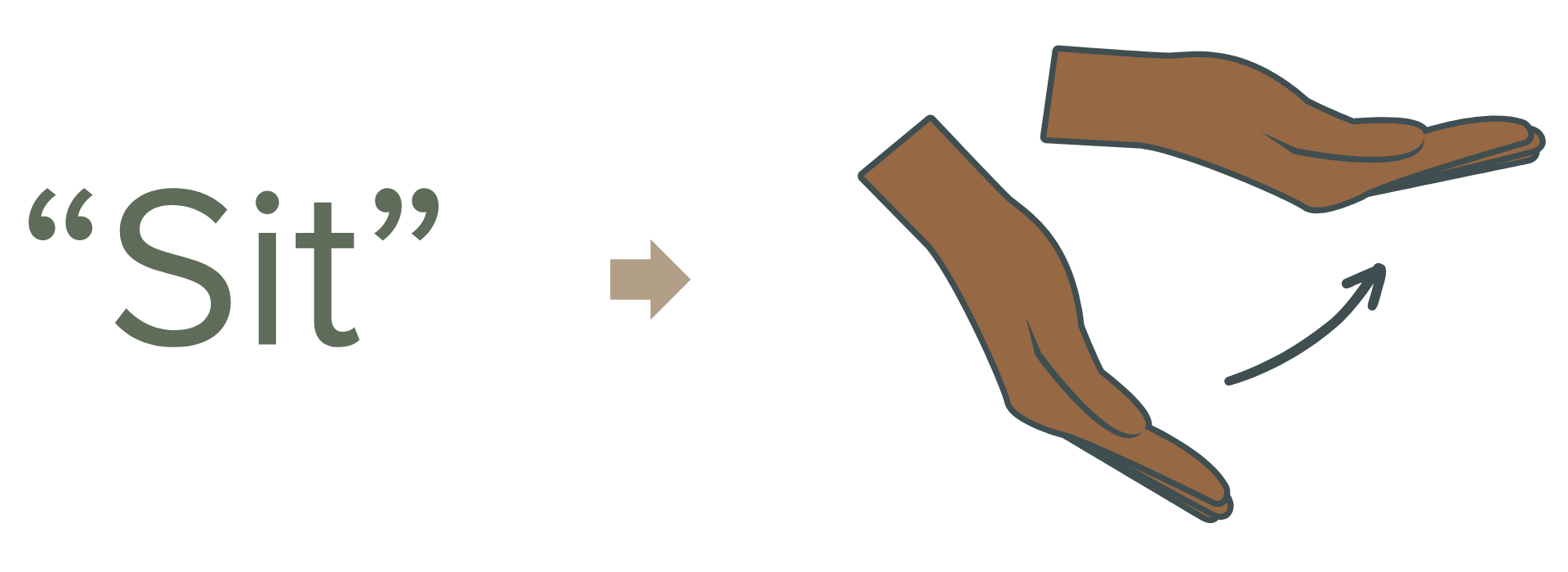WHAT YOU WILL NEED
NOTE: All products have affiliate links, so I earn a small commission on each purchase. Happy training!
PHASE 1: TEACH THE BEHAVIOR
Before we can expect our dogs to understand the word “sit,” we need to show them what we actually want them to do. We’ll do this by having them follow a treat into position—a little trick called “luring.” Skip the verbal “sit” command for now (we’ll get there).
Lure into position
Hold a treat on your dog's nose, and slowly lift it upward and backward. This motion will naturally guide your dog into a sitting position.
Click and treat
As soon as your dog's rear hits the ground, click and reward them with the treat. Make sure to only reward them while they are sitting (not after they get up).
Repeat
Your dog will need lots of practice to master this behavior so keep going! Practice a few times a day for fastest results.
TIPS FOR PROBLEM SOLVING
Move Slowly
Keep your hand glued to your puppy’s nose as you move slowly and deliberately. If you go too fast or hold the treat too high, your dog might jump, nip, or just lose their composure.
Angle Fingertips Away
If you're worried about getting nipped by those sharp puppy teeth, hold the treat with your fingertips pressed together and angled away from your dog to protect your fingers.
PHASE 2: SOLIDIFY THE HAND CUE
Ditch the Treat in Hand
Reinforce with Treats: Begin the session by luring your dog into the sit five times to get your dog in the zone. Click and treat for each correct response.
Remove the Treat: Now, cue the sit without holding a treat in your hand, but using the same hand motion. Once your dog sits, click and treat.
Stay Consistent: It’s important to continue to reward the sit after the behavior. This prevents your dog from only responding when they know you have food.
Increase the Distance
Start Small: Begin by placing a little distance between your hand and your dog’s nose, still using the same upward motion.
Raise Your Hand: Gradually raise your hand a few inches higher over several sessions. Your dog should still sit, even though your hand is farther away.
Stand Upright: After some practice, you should be able to cue the sit while standing fully upright. Your dog will associate the motion, not just the treat, with sitting.
PHASE 3: TEACH THE VERBAL CUE
Introduce "sit"
Now that your hand cue is solid, it’s time to introduce the verbal cue. Say “sit,” then immediately give the hand cue. When your puppy sits, click and treat. Your pup will be most responsive if you consistently only give the verbal cue one time. No repeating.
Repetition
Keep practicing by saying "sit" followed by the hand cue. Eventually, your dog will anticipate the hand cue and sit just from the verbal cue. Be patient, and click and treat when they sit for the verbal cue alone. If they don’t respond, avoid repeating—just use the hand cue.
PHASE 4: SELECTIVE REINFORCEMENT
Reward the best sits: As your dog becomes consistent, begin rewarding only the best, fastest responses.
Skip slow sits: Don’t reward slower or less enthusiastic sits. This sharpens their reaction and helps solidify the command.










